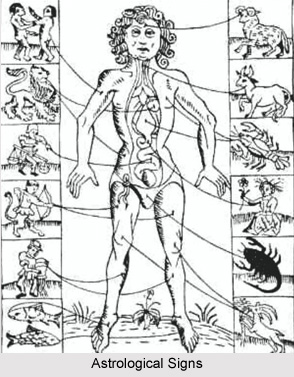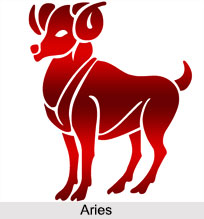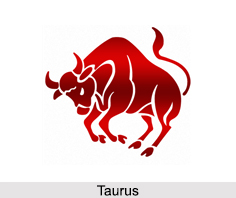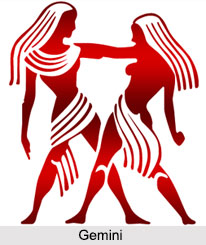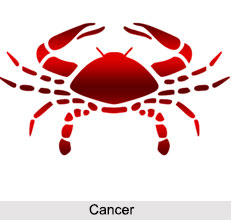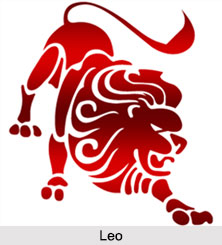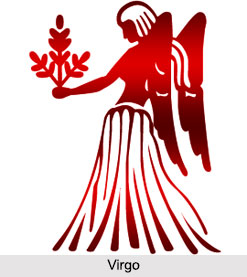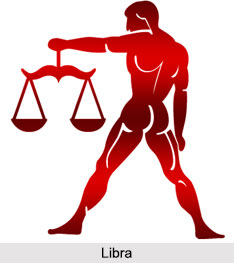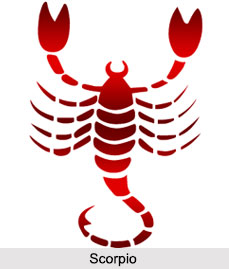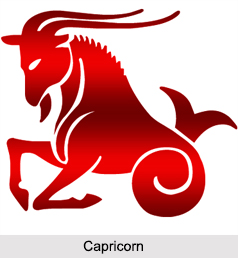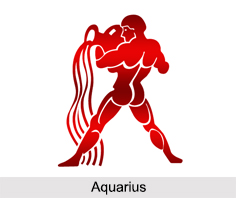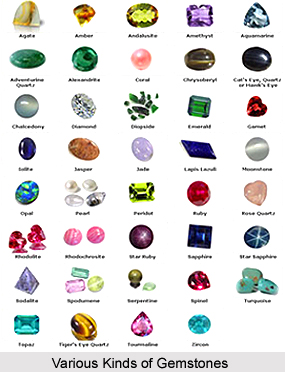 Gemstone, blessed with its mystical aura is indeed one of the most desirable stones. There are certain attributes that make a gemstone desirable. The qualities sought in Natural gemstones are beauty, rarity, and durability. The beauty of a gemstone depends primarily on its optical properties, which impart its lustre, fire, and colour.
Gemstone, blessed with its mystical aura is indeed one of the most desirable stones. There are certain attributes that make a gemstone desirable. The qualities sought in Natural gemstones are beauty, rarity, and durability. The beauty of a gemstone depends primarily on its optical properties, which impart its lustre, fire, and colour.
The durability depends on hardness and resistance to cleavage or fracture. The physical properties by which gems are distinguished from each other are form of the crystal, index of refraction of light, hardness, presence or absence of cleavage, type of fracture (conchoidal, even, or uneven) in stones without cleavage, specific gravity, colour, streak (colour of the powder as determined by rubbing it over white, unglazed porcelain), lustre (appearance of the surface in reflected light-adamantine, vitreous, resinous, greasy, silky, or pearly), and transparency. Minor properties that serve to identify some stones are chiromancy (changeable lustre or colour under undulating light), opalescence, asterism (star like sparkling), and play of colour, fluorescence, phosphorescence, iridescence, and electrical properties. The unit of weight used for gemstones is the metric carat. One carat is equal to 200 milligram.
There are more than 30 popular gem varieties and many more rare collector gemstones. Although some gemstone varieties have been treasured since before history began and others were only discovered recently, they are all nature`s gifts to us.
On the basis of subsequent characteristic gemstone can be classified. Based on the characteristics like, Chemical composition, crystal structure, optical characteristic, Specific Gravity and durability gemstones can be classified.
1) Chemical Composition of Gemstone
Over the Years gemstones where formed as silicate or oxide crystals (i.e. they contain oxygen or silicon) when the earth started cooling down. A gemstone may be a pure chemical element or simple compound, a complex compound or a blend of different compounds & elements.
2) Crystal Structure of Gemstone
Gem material may be crystalline or amorphous (non-crystalline). Gemstones may have single or manifold of microscopic crystals or amorphous mass. In areas where rapid cooling of molten rocks took place we find smaller crystals where as larger crystals are found where slow cooling of molten rocks occurred.
Crystal Systems
Cubic: Also called isometric system, Cubic systems have 3 perpendicular axis of equal length. Diamonds, garnets, pyrite & spinel are usually found in crystals. Some familiar shapes in cubic system are cube (6 faces), tetrahedron (4 faces), trapezohedron (24 faces) and hexoctehedron (48 faces).
Hexagonal: Hexagonal crystals have 4 axis of which 3 are of equivalent length intersecting at 60 degree & the fourth one is perpendicular. Quartz, beryl, corundum 7 tourmaline are found in hexagonal crystal. Hexagonal crystals can be further classified into trigonal or rhombohedral.
Tetragonal: Zircon, Rutile & Scapolite are some of the stones that occur in Tetragonal crystals. Tetragonal crystal has 8 axis dissimilar lengths intersecting at 90 degree.
Orthorhombic: Ortho means perpendicular, orthorhombic crystals have 3 axis at 90 degree angles all of which are of different lengths. The best illustration in this category is topaz.
Monoclinic: Jadeite & Nephrite are regular examples for monoclinic crystals. They have 3 axis of different lengths, two of which intersect at an angle other than 90 degree & both are perpendicular to the third.
Triclinic: Tri clinic crystals have 3 axis all of which are of diverse length & intersect at angles unequal to 90 degree. Typical examples include labrodorite & microcline feldspar.
3) Optical characteristics
Optical characteristics of gemstones are primarily derived from their chemical composition and crystal structure.
Colour: Colour of the gemstone is the evident result of selective absorption or transmission of different frequencies of visible light. Colour can be described as the combination of three characteristics: hue, tone, and intensity.
Identification of Pure Gemstone
The normal human eye can identify approximately 150 pure hues and around one million colours. The differences among colours may be immediately obvious or so subtle that direct comparison under controlled conditions is required to discern them. Colour acuity is also highly affected by fatigue, diet, and other factors, so it is unwise to attempt judging subtle colour differences in gemstones such as diamond without attention to the physical and emotional condition of the observer, as well as properly graded comparison stones and careful control of lighting conditions.
Pleochroism: Pleochroism is the obvious change in colour of a doubly refractive gemstone when viewed through different directions of the crystal structure. In most cases, the colour variations are not obvious to the unaided eye and must be viewed through a polariscope or dichroscope, but in some cases, the pleochroic colours are strikingly obvious. For example, many green tourmalines appear black through the C axis of the crystal, and iolite shows a striking combination of blue-violet and near colourless. Dichroism refers to the display of two ("di") pleochroic colours in a gemstone.
Alexandrite-like colour change, or photochroism, is the marked change in perceived colour of a gemstone under different lighting conditions. As the name implies, the most famous example appears in alexandrite, a form of chrysoberyl that typically appears blue or green in daylight and red or purplish in incandescent light, but similar colour changes may be observed in sapphire, garnet, and tourmaline. The occurrence is due to selective absorption of different wavelengths of light, and the predominance or absence of those wavelengths in the prevailing light (incandescent light has proportionately higher quantities of reddish wavelengths and less of blue or green).
Optic Character: Gemstones may affect the passage of light differently through different directions in the crystal structure. If the velocity of light is constant through all directions in the stone, the stone is said to be singly refractive, or isochoric, and has one refractive index. This is characteristic of isometric crystals. If the velocity of light varies with direction, the stone is doubly refractive, or anisotropic, and has two refractive indices. In anisotropic materials, light is separated into two polarized components, the ordinary ray and the extraordinary ray. Anisotropic materials can be further characterized as uniaxial, biaxial positive and biaxial negative.
Amorphous (non-crystalline) materials, such as opal, amber, and glass, may scatter light in unusual directions due to internal stress and display a phenomenon known as anomalous double refraction.
Refractive Index: Refractive index, or R.I., is the ratio of the velocity of light in air to the velocity of light through a transparent material. If light bypasses from air into a transparent material at an angle of incidence other than a 90 degree angle, it is deflected at a different angle (the coincident angle) according to the R.I. Gemstones with higher R.I. are generally more brilliant than those with low R.I. For example, diamond has an R.I. of about 2.4; quartz, about 1.54-1.55. The R.I. of most gemstones is easily measured using a simple optical instrument known as a refract meter.
Birefringence : Birefringence is the variation in value between the highest and lowest refractive indices in a doubly refractive (anisotropic) material. Depending on the orientation of a faceted stone, this can result in a "fuzzy" appearance and apparent doubling of facets viewed through the stone.
Dispersion: Dispersion is the aptitude of a gemstone to separate light into its component colours; that is, the quality of passing different wavelengths of light at different velocities. Dispersion is the quality in a diamond that produces sparkles of color in an otherwise colourless stone. Quartz, which has a dispersion of 0.013, shows much less of this effect than diamond, which has a dispersion of 0.044. Diamond, in turn, shows much less colour play than sphalerite, which has a dispersion of 0.156.
Fluorescence: Many materials are fluorescent. That is, when bared to ultraviolet light or X-rays, they transform some of the incoming energy into visible light. The colour and intensity of the fluorescence is often indicative, but not conclusive, of the identity of the material. For example, natural yellow sapphires from Ceylon show a distinctive apricot-colour fluorescence, while synthetic yellow sapphires generally show no fluorescence or a dull red when exposed to long-wave ultraviolet (UV) light. Most natural emeralds are inert (non-fluorescent) under long-wave UV, and most synthetic emeralds show a moderate to strong red fluorescence. Due to the prominent exceptions, this test alone is inconclusive.
Phosphorescence: If a fluorescent material continues to emanate light after the exciting UV or X-ray light is removed, it is said to be phosphorescent. This phenomenon usually lasts only a few seconds but may occasionally persist for much longer periods. This is a relatively rare characteristic in gemstones.
Clarity: Gemstones can vary from complete opacity to lucid clarity and may contain few or many inclusions such as crystals of other minerals, gas- or liquid-filled cavities, or even insects! In some gemstones, such as emerald, certain inclusions are highly distinctive and can be used as reliable indicators of identity. A gemmological microscope (a binocular microscope with a typical magnification of 10X to 40X) is one of the most useful tools in identifying many gemstones, as well as grading them on relative clarity.
4) Specific Gravity
Gem materials vary greatly in density. For instance, amber may float in salt water as its density is close to that of water, whereas hematite is more than five times the density of water. This is why two different gemstones may have the same size but different weights and vice versa. A one carat round brilliant diamond of typical proportions will be approximately 6.5 mm in diameter, while a round brilliant ruby of the same size and proportions will weigh approximately 1.55 carats. Generally, gemmologists refer to specific gravity, or relative density -- the ratio of the density of a gemstone relative to that of water.
5) Durability
Durability refers to the life of any object. In terms of gemmology it refers to hardness & toughness.
The two most well known qualities of durability -- hardness and toughness -- are often misunderstood. Hardness is resistance to scratching or piercing. Toughness is resistance to breakage. The combination of the two largely defines the durability of a gemstone. Diamond is the hardest naturally occurring material and is also quite tough. However, a hard blow can break it. Jadeite and nephrite (the jades) are much softer and relatively easy to scratch but are perhaps the toughest gem materials. Hardness is often represented on the Mohs scale, a nonlinear scale of scratch resistance varying from 1 (talc) to 10 (diamond). The Mohs scale can be misleading. There is a much greater difference in hardness between 9 (corundum) and 10 (diamond) than between 9 and 1 (talc). More precise, and less familiar, measurements of hardness are done using other systems, such as the Knoop scale of resistance to indentation. Because of the likelihood of physical damage, hardness tests are NOT recommended for gem identification. Resistance to chemical degradation or to changes in temperature or humidity is important. Turquoise is often quite porous and can be discoloured by exposure to oils. Opals are heat-sensitive and have a high water content, sudden temperature changes or extremely dry conditions can cause them to crack or craze.
Thermal conductivity is very low in most gemstones but is extremely high in diamond (from 1.6 to 4.8 times as great as in pure silver). This unusual property of diamond is the basis for several popular diagnostic probes that are used to distinguish diamond from its numerous replication.
